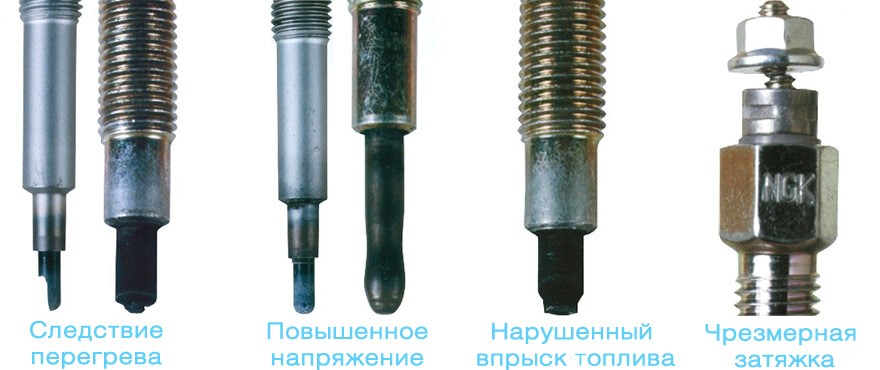
How to test diesel glow plugs
Glow plugs are special heating devices used to make diesel engines easier to start. They are similar in design to spark plugs; however, they differ in their main function. Instead of producing a timing spark to ignite...
Glow plugs are special heating devices used to make diesel engines easier to start. They are similar in design to spark plugs; however, they differ in their main function. Instead of creating a synchronized spark to ignite the fuel mixture, as spark plugs do, glow plugs simply serve to generate additional heat that aids the diesel engine's cold start combustion process.
Diesel engines rely entirely on the heat generated during cylinder compression to ignite the fuel mixture. When the glow plugs begin to fail, this extra heat to aid the combustion process is gone and starting the engine can become more difficult, especially in cold weather.
Another sign of bad glow plugs is the appearance of black smoke on start-up, indicating the presence of unburned fuel due to an incomplete combustion process. In this guide, we'll walk you through how to test the resistance of your glow plugs to determine if they're working properly.
Part 1 of 1: Checking the Glow Plugs
Necessary materials
- Basic set of hand tools
- Digital multimeter
- flashlight
- Paper and pen
- Service manual
Step 1: Determine the resistance value of the multimeter. Before checking the terminals, you need to determine the resistance value of your digital multimeter. To do this, turn on the multimeter and set it to readings in ohms.
- Functions: Om is denoted by the symbol omega or a symbol similar to an inverted horseshoe (Ω).
Once the multimeter is set to read in ohms, touch the two multimeter leads together and examine the displayed resistance reading.
If the multimeter reads zero, try changing the multimeter setting to a higher sensitivity until a reading is obtained.
Record this value on a piece of paper as it will be important when calculating the resistance of your glow plugs later.
Step 2: Find the glow plugs in your engine. Most glow plugs are mounted in cylinder heads and have a heavy gauge wire attached to them, similar to that of a conventional spark plug.
Remove any covers that may obstruct access to the glow plugs and use a flashlight for additional illumination if necessary.
Step 3: Disconnect the glow plug wires.. Once all glow plugs have been found, disconnect any wires or caps attached to them.
Step 4: Touch the negative terminal. Take a multimeter and touch the negative wires to the negative terminal of your car battery.
If possible, secure the wire to the terminal by tucking it in or under the rack's clamping mechanism.
Step 5: Touch the positive terminal. Take the positive lead of the multimeter and touch it to the glow plug terminal.
Step 6: Record the resistance of the glow plug.. When both wires touch the terminals, record the resistance reading indicated on the multimeter.
Again, the readings obtained should be measured in ohms (ohms).
If no reading is taken when the glow plug is touched, check that the negative wire is still in contact with the negative battery terminal.
Step 7: Calculate the resistance value. Calculate the true resistance value of the glow plug by subtraction.
The true resistance value of the glow plug can be determined by taking the resistance value of the multimeter (recorded in step 2) and subtracting it from the resistance value of the glow plug (recorded in step 6).
Step 8: Estimate the Resistance Value. Compare the calculated true resistance value of your glow plug to the factory specification.
If the resistance of the glow plug is greater than or out of range, the glow plug must be replaced.
- Functions: For most glow plugs, the true resistance range is between 0.1 and 6 ohms.
Step 9: Repeat for other glow plugs.. Repeat the procedure for the remaining glow plugs until they have all been tested.
If any of the glow plugs fails the test, it is recommended to replace the entire set.
Replacing just one or more glow plugs can cause engine problems similar to a bad glow plug if the resistance readings vary too much.
For most vehicles, checking glow plug resistance is a fairly simple procedure, provided the glow plugs are in an accessible location. However, if this is not the case, or you are not comfortable taking on this task yourself, this is a service that any professional technician, for example from AvtoTachki, will be able to perform quickly and easily. If necessary, they can also replace your glow plugs so you can start your car normally.
